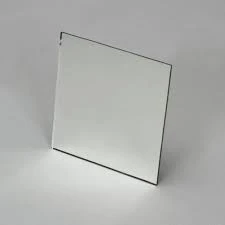

The Fascinating World of Glass Reflection An Exploration of Light and Design
Glass, with its transparent allure and versatile properties, has captivated humankind for centuries. One of the most intriguing aspects of glass is its ability to reflect light, creating a mesmerizing interplay of brightness and shadow. This phenomenon not only enhances the aesthetic appeal of architectural designs but also plays a critical role in various scientific and industrial applications. In this article, we will delve into the fascinating world of glass reflection, exploring its principles, applications, and the artistic endeavors it inspires.
The Science of Reflection
At its core, the reflection of light involves the bouncing of light waves off a surface. When light encounters glass, a portion of it is transmitted while some is reflected back. The degree of reflection depends on several factors, including the angle of incidence, the refractive index of the glass, and the type of surface finish. Clear glass, for instance, reflects about 4% of the light that hits it under normal conditions. However, specialized types of glass, such as mirrored or tinted glass, can dramatically increase reflective properties.
Architectural Wonders
Glass has become a staple in modern architecture, offering both design flexibility and functional benefits. The reflective qualities of glass are often exploited in skyscrapers and commercial buildings, where large glass facades can create stunning visual effects while simultaneously reducing energy consumption. By using reflective glass, architects can minimize heat gain from sunlight, thus lowering the demand for air conditioning and saving energy costs. These buildings not only stand as symbols of contemporary design but also contribute to sustainable urban development.
The Role of Reflection in Art

Beyond architecture, glass reflection has inspired countless artists. The interplay of light and reflection can evoke emotion and create immersive experiences. Artists like Dan Grahams and Olafur Eliasson have incorporated reflective glass in their installations, inviting viewers to engage with their surroundings in new ways. Grahams’ glass pavilions, for example, allow visitors to see themselves and their environment reflected in ways that challenge perceptions of space and presence. Such artworks harness the dynamic nature of glass reflection to blur the boundaries between reality and art.
Scientific Applications
In the realm of science, glass reflection is crucial in various technologies, including optical instruments, lasers, and solar panels. For example, reflective coatings on glass utilize the principles of reflection to enhance the performance of solar panels. By reflecting more sunlight onto the photovoltaic cells, these coatings can significantly increase energy conversion efficiency. Similarly, in microscopy and telescopy, glass reflects light to magnify images, enabling scientists to observe the minutiae of the universe or the microscopic world.
The Future of Glass Reflection
As technology advances, the future of glass reflection appears promising. Innovations such as smart glass, which can change its reflective properties based on environmental conditions or user preferences, are on the rise. These technologies not only offer greater energy efficiency but also transform the way spaces are experienced. Imagine buildings that can adapt their transparency or reflectivity in response to sunlight or weather changes—this could revolutionize architectural design and urban planning.
Conclusion
In conclusion, the realm of glass reflection is one that intertwines science, art, and architecture. Its principles enable innovative designs that enhance our built environment and create stunning visual experiences. As we continue to explore and manipulate the reflective properties of glass, we unlock the potential for new artistic expressions and scientific advancements. The luminous dance of light upon glass invites us to rethink our surroundings and inspires creativity in both artists and engineers alike. Indeed, glass reflection is more than a mere physical phenomenon; it is a gateway to a world of possibilities that blends the beauty of nature with human ingenuity.